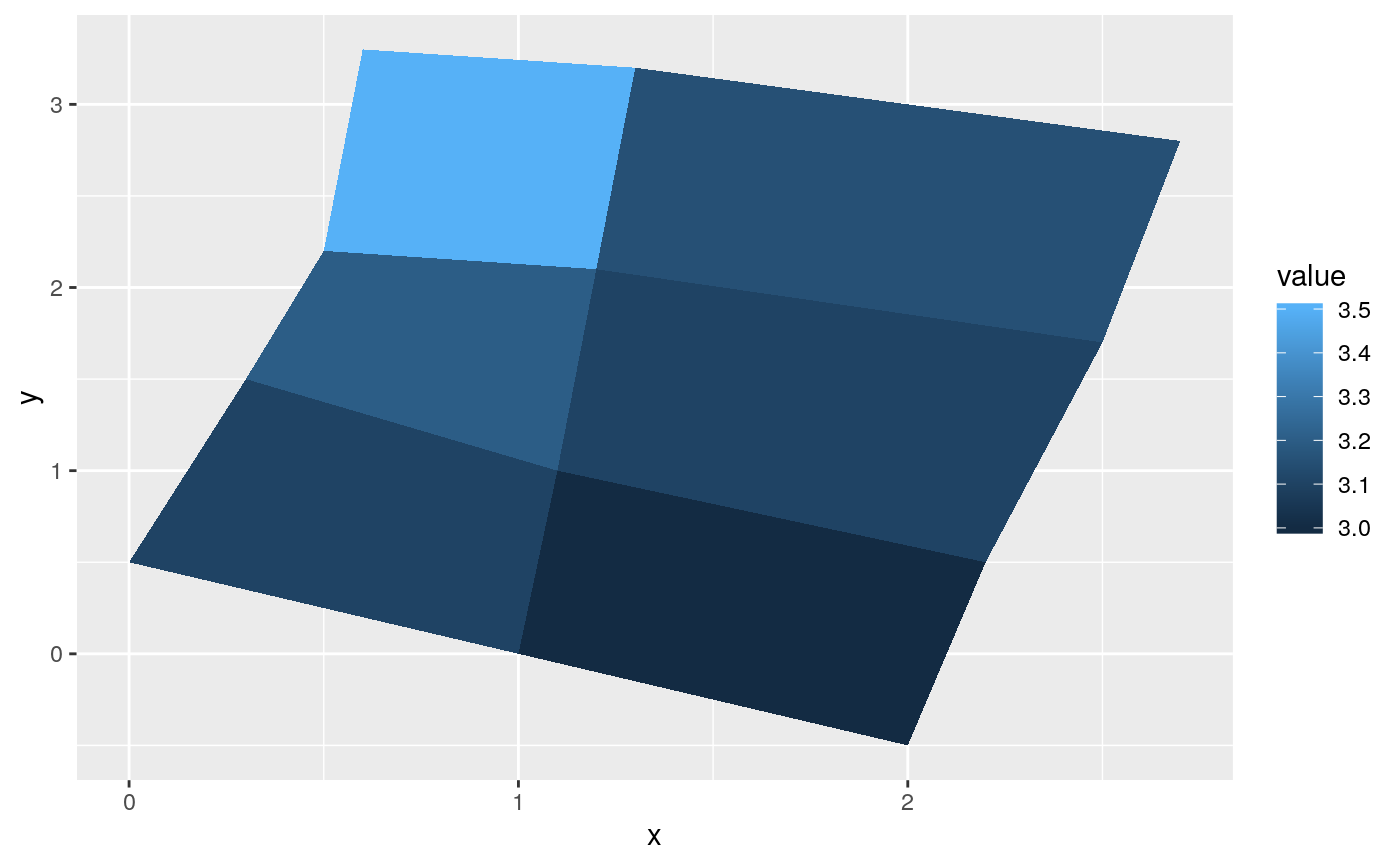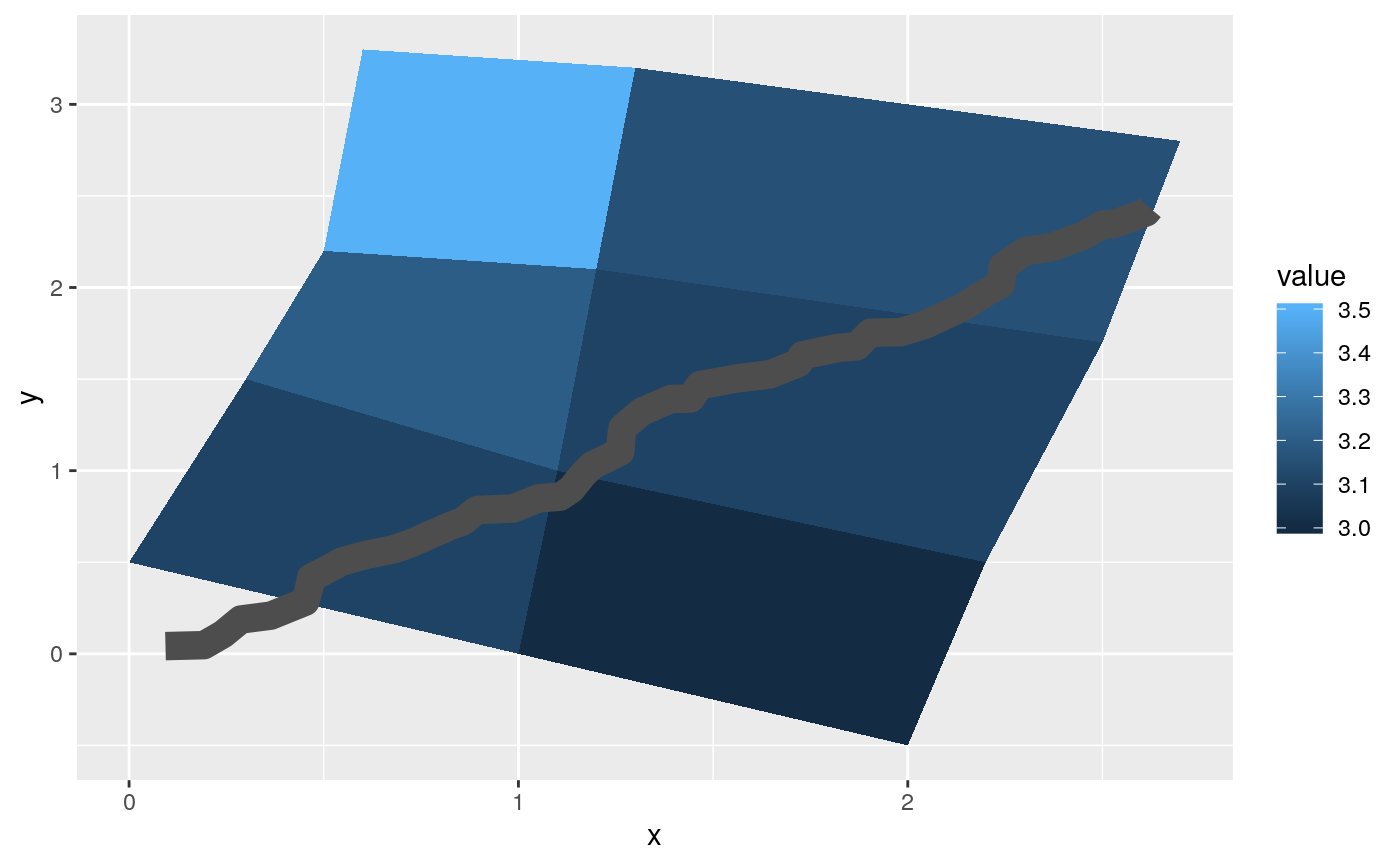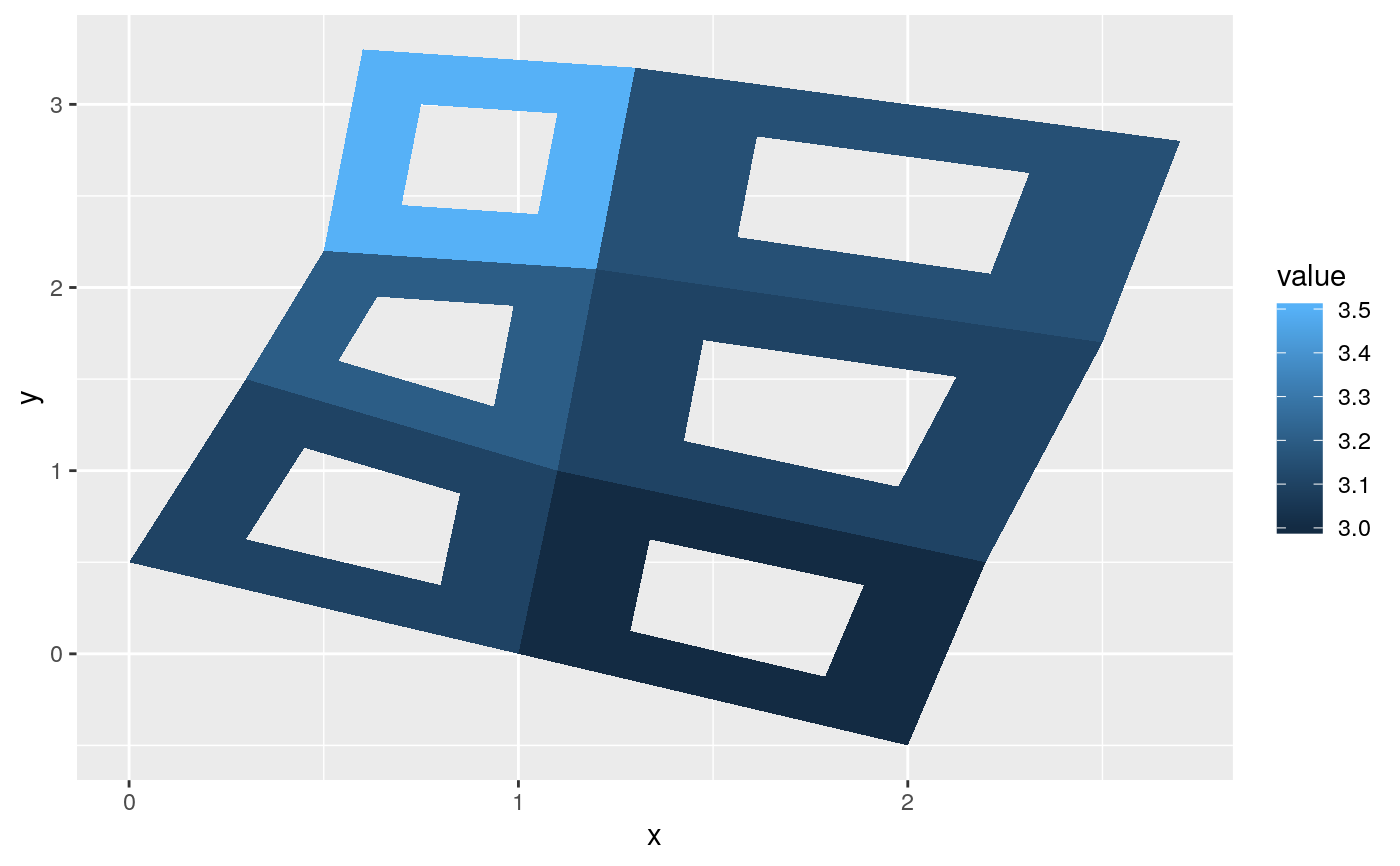Polygons are very similar to paths (as drawn by geom_path())
except that the start and end points are connected and the inside is
coloured by fill. The group aesthetic determines which cases
are connected together into a polygon. From R 3.6 and onwards it is possible
to draw polygons with holes by providing a subgroup aesthetic that
differentiates the outer ring points from those describing holes in the
polygon.
geom_polygon(mapping = NULL, data = NULL, stat = "identity", position = "identity", rule = "evenodd", ..., na.rm = FALSE, show.legend = NA, inherit.aes = TRUE)
Arguments
| mapping | Set of aesthetic mappings created by |
|---|---|
| data | The data to be displayed in this layer. There are three options: If A A |
| stat | The statistical transformation to use on the data for this layer, as a string. |
| position | Position adjustment, either as a string, or the result of a call to a position adjustment function. |
| rule | Either |
| ... | Other arguments passed on to |
| na.rm | If |
| show.legend | logical. Should this layer be included in the legends?
|
| inherit.aes | If |
Aesthetics
geom_polygon() understands the following aesthetics (required aesthetics are in bold):
xyalphacolourfillgrouplinetypesizesubgroup
Learn more about setting these aesthetics in vignette("ggplot2-specs").
See also
geom_path() for an unfilled polygon,
geom_ribbon() for a polygon anchored on the x-axis
Examples
# When using geom_polygon, you will typically need two data frames: # one contains the coordinates of each polygon (positions), and the # other the values associated with each polygon (values). An id # variable links the two together ids <- factor(c("1.1", "2.1", "1.2", "2.2", "1.3", "2.3")) values <- data.frame( id = ids, value = c(3, 3.1, 3.1, 3.2, 3.15, 3.5) ) positions <- data.frame( id = rep(ids, each = 4), x = c(2, 1, 1.1, 2.2, 1, 0, 0.3, 1.1, 2.2, 1.1, 1.2, 2.5, 1.1, 0.3, 0.5, 1.2, 2.5, 1.2, 1.3, 2.7, 1.2, 0.5, 0.6, 1.3), y = c(-0.5, 0, 1, 0.5, 0, 0.5, 1.5, 1, 0.5, 1, 2.1, 1.7, 1, 1.5, 2.2, 2.1, 1.7, 2.1, 3.2, 2.8, 2.1, 2.2, 3.3, 3.2) ) # Currently we need to manually merge the two together datapoly <- merge(values, positions, by = c("id")) p <- ggplot(datapoly, aes(x = x, y = y)) + geom_polygon(aes(fill = value, group = id)) p# Which seems like a lot of work, but then it's easy to add on # other features in this coordinate system, e.g.: stream <- data.frame( x = cumsum(runif(50, max = 0.1)), y = cumsum(runif(50,max = 0.1)) ) p + geom_line(data = stream, colour = "grey30", size = 5)# And if the positions are in longitude and latitude, you can use # coord_map to produce different map projections. if (packageVersion("grid") >= "3.6") { # As of R version 3.6 geom_polygon() supports polygons with holes # Use the subgroup aesthetic to differentiate holes from the main polygon holes <- do.call(rbind, lapply(split(datapoly, datapoly$id), function(df) { df$x <- df$x + 0.5 * (mean(df$x) - df$x) df$y <- df$y + 0.5 * (mean(df$y) - df$y) df })) datapoly$subid <- 1L holes$subid <- 2L datapoly <- rbind(datapoly, holes) p <- ggplot(datapoly, aes(x = x, y = y)) + geom_polygon(aes(fill = value, group = id, subgroup = subid)) p }


